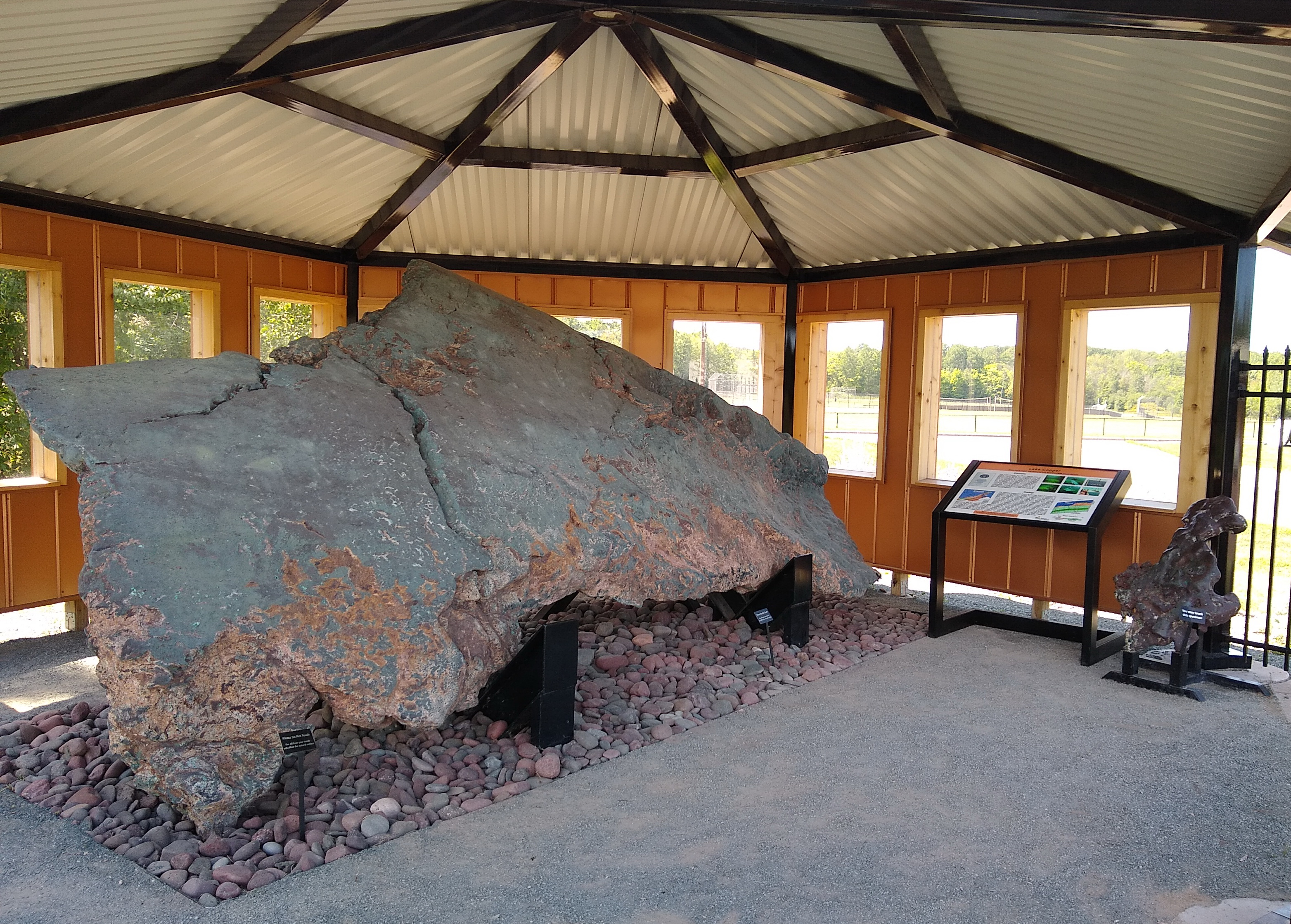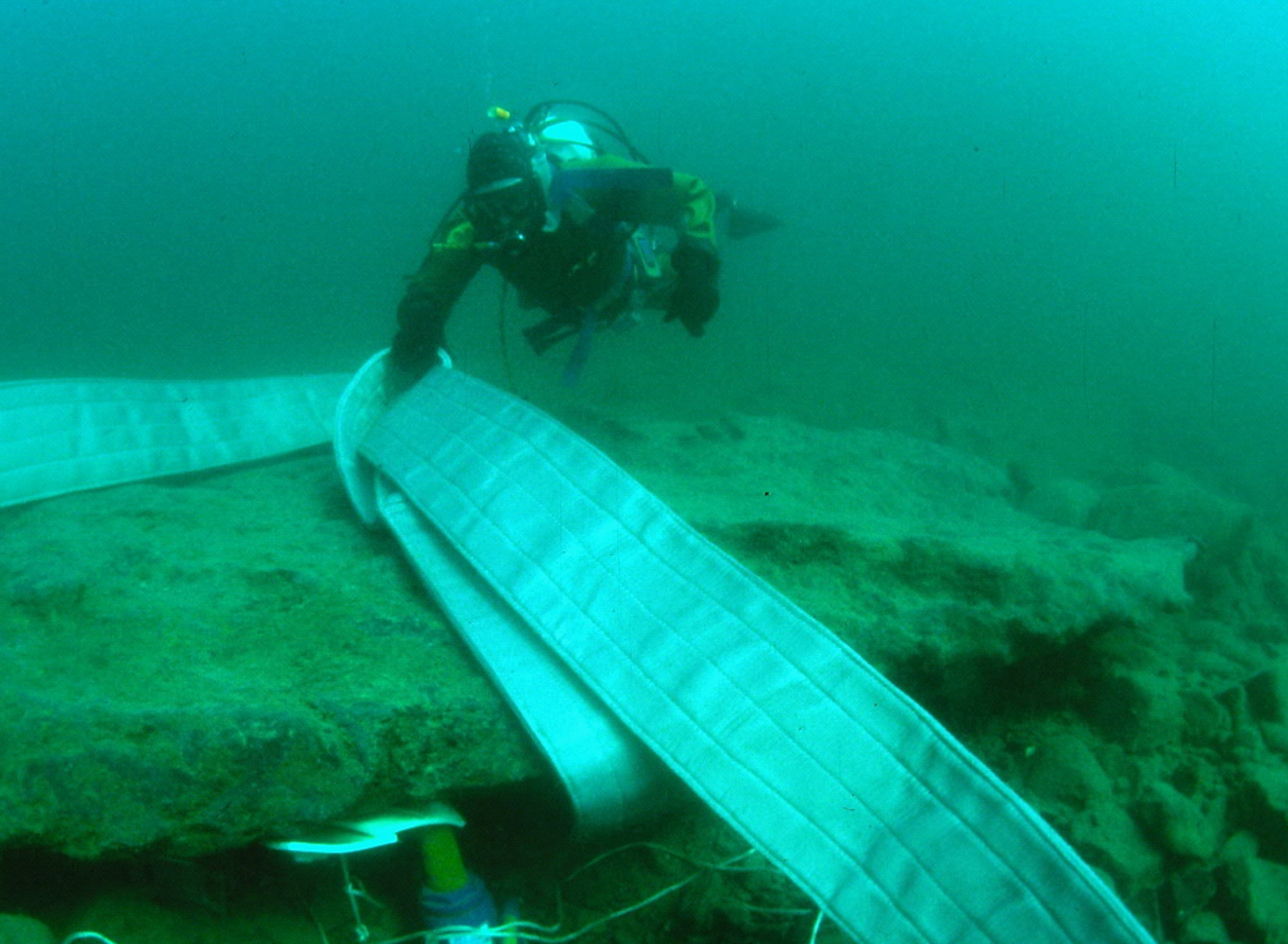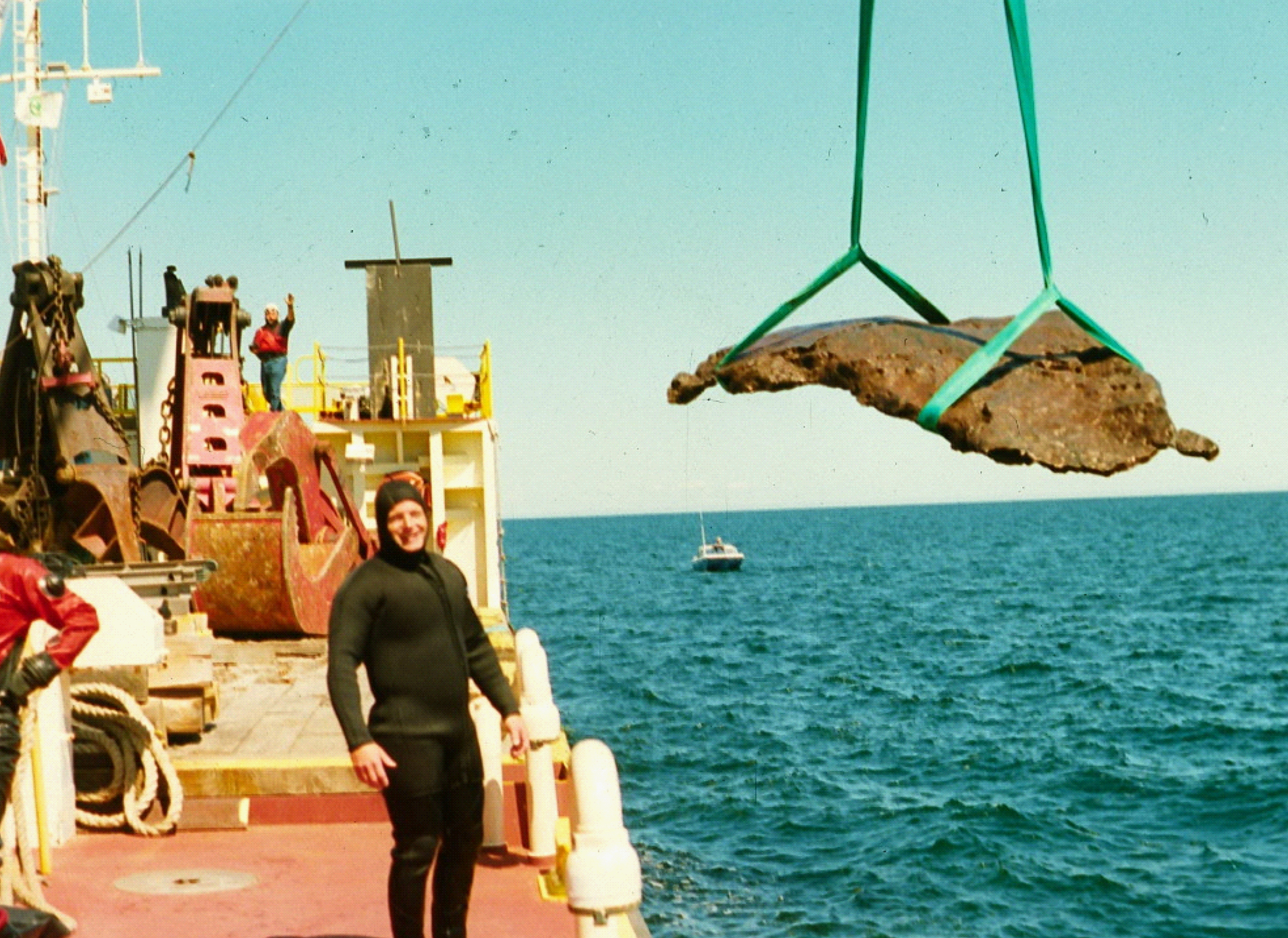A.E. Seaman Mineral Museum: Preserving A Monumental Copper Discovery for Generations
 The renowned 19-ton copper mass found lying on the bottomlands of Lake Superior
The renowned 19-ton copper mass found lying on the bottomlands of Lake Superior in Great Sand Bay.
Photograph courtesy of A. E. Seaman Mineral Museum of Michigan Tech.
In 1991 when Robert Barron and Donald Kauppi went diving for copper in the Great Sand Bay area of Lake Superior, they discovered a 19-ton mass of native copper that would eventually receive recognition from Guinness World Records.
“At the time, Bob worked for the A.E. Seaman Mineral Museum,” says Theodore Bornhorst, Executive Director and Interim Curator of the A.E. Seaman Mineral Museum of Michigan Technological University. “He dove in the summer and found this.”
An avid diver, who dove along the shoreline of the Keweenaw Peninsula for many years, Barron and Kauppi had an inkling that a mass of copper was present somewhere underwater.
“There are small veins and deposits all over and the veins of copper on the land would theoretically extend underwater,” Bornhorst says.
The Keweenaw Peninsula, located in northern Michigan, was a major copper mining district at one time.
“The Keweenaw Peninsula is the world’s largest accumulation of native copper,” Bornhorst says. “From 1845 to 1968 they mined 11 billion pounds. From 1845 to the 1930s, 80% of all the copper used in the U.S. came from the Keweenaw Peninsula.”
After commercial mining in the Peninsula ceased in 1968, there have been small attempts at mining.
“A couple of tourist mines are open,” Bornhorst says.
To locate the copper mass on their dive along the shoreline of the peninsula, Barron and Kauppi systematically used a boat on their search, leading them to discover the big, giant mass at a depth of 30 feet.
The mass, when found on the surface of the lake, was positioned horizontally rather than vertically in the vein.
 Preparing the copper mass for removal from the bottomlands of Lake Superior.
Preparing the copper mass for removal from the bottomlands of Lake Superior.Photograph courtesy of A. E. Seaman Mineral Museum of Michigan Tech.
“It had fallen over, but a small part of the mass was likely still attached to the original vein,” Bornhorst says. “The glacier rode over the top and made it smooth – the glacier never moved it, but you can see the effects of the glacier on it.”
It wasn’t until eight years later, in 1999, when the mass was pulled out of the water through a procedure that was completed in one day.
“It was retrieved by way of Army Corps engineers using their big barge they use to put in the big rocks around the break walls.” Bornhorst says.
After reaching an agreement with the state of Michigan, the piece made its way to a satellite exhibition for a number of years at the Quincy Mine before it was moved to the A.E. Seaman Mineral Museum in 2014, located on the campus of Michigan Tech.
“Anything on the bottom of the lake within the state of Michigan is owned by the state of Michigan,” Bornhorst says. “We have the piece on permanent loan.”
For the past five years, the oblong mass has been housed at the museum’s Copper Pavilion that is separate from the museum and open to the public. A popular attraction at the museum, the mass is referred to as ‘lake copper’.
“The reason is because it comes from the bottom of Lake Superior and to keep it distinctive from the other coppers around and from the term ‘float copper’,” Bornhorst says. “It is a unique sort of thing and that is why we gave it that term.”
In 2001 the mass received recognition from Guinness World Records, formerly known as The Guinness Book of World Records.
“It’s in the Guinness World Records for the largest copper boulder native metal recovered from the bottom of Lake Superior,” Bornhorst says, adding that while it’s referred to as a boulder by Guinness, it is actually a tabular mass.
According to Bornhorst, the mass has even greater significance beyond what is listed on the Guinness World Records certificate. Since the time it was discovered, it was estimated to be 17 tons, but a more recent estimate determined it was closer to 19 to 20 tons.
“It is actually the largest piece of natural native element boulder found in any body of water,” Bornhorst says.
 Robert Barron oversees the removal of the copper mass from Lake Superior.
Robert Barron oversees the removal of the copper mass from Lake Superior.Photograph courtesy of A. E. Seaman Mineral Museum of Michigan Tech.
The museum where the mass is on display was officially established in 1902 and has evolved from being a local museum created by the former Michigan College of Mines, to an internationally recognized museum run by what is now known as Michigan Technological University.
“We have a worldwide collection with extensive holdings from all over the place,” Bornhorst says.
Among their many exhibits they have one dedicated to all of the uses for copper.
“Some call copper the ‘metal of the ages’ since it was used back in antiquity,” Bornhorst says. “Egyptians used copper and it has been used ever since.”
Still an important metal for the world, Bornhorst discussed the major ways in which it comes into use today.
“Copper has a variety of uses from electric things – because it conducts electricity and heat well – to coinage, decorative, it is antimicrobial, which is why brass is used for door handles,” he says. “It’s an amazing metal.”
Resources:
Also in this Issue:
- Phenomenal Nature: Mukherjee Retrospective opens at the Met
- Custom Copper Designs with a Twist
- Coast Chimes: The Signature Sound of Copper
- A.E. Seaman Mineral Museum: Preserving A Monumental Copper Discovery for Generations
- Peter Voulkos: Merging Ceramic and Bronze
